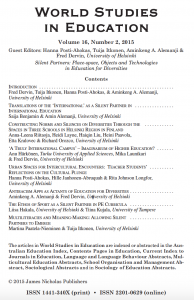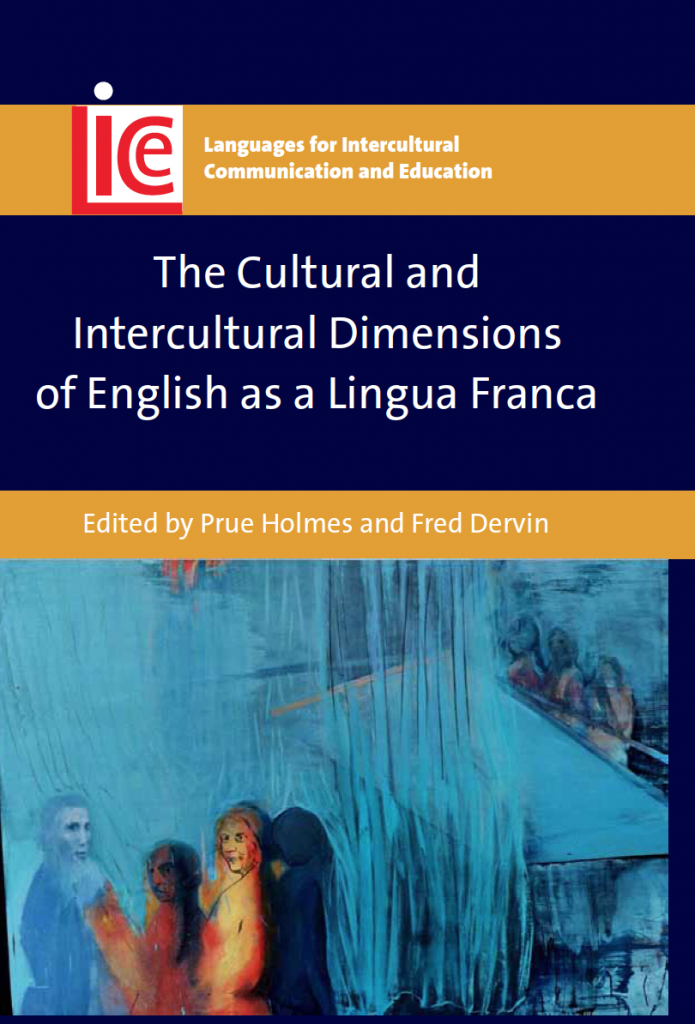Fred Dervin, Professor of Multicultural Education at the University of Helsinki (Finland), will give a public lecture at Utrecht University on 27 October. The lecture will be titled ‘Post-Intercultural Communication and Education: Concepts and Methods’ and is organized by the Utrecht University Master’s programme Intercultural Communication.
Sydney soon
Forth!
CFC
Call for Chapters
International students in China: Education, student life and intercultural encounters
Eds. Fred Dervin (University of Helsinki, Finland), Xiangyun Du (Aalborg University, Denmark) & Anu Härkönen (TUAS & University of Helsinki, Finland)
Deadline for abstracts: 15 October 2015
Volume to be published by Palgrave Macmillan in the Palgrave Studies on Chinese Education in a Global Perspective (Series Editors: Dervin/Du)

“Being an international student in China is an unforgettable and immensely rewarding experience. Not only will you be able to witness firsthand China’s historic transformation from an underdeveloped country into a major global power, but you’ll meet people from all over the world too. Many international students take advantage of the two long holidays in an academic year (each lasting one to two months) to travel around China and Asia”. (CUCAS, China’s University and College Admission System)
In 2014 China welcomed around 380,000 international students in its 2,788 higher education institutions. Most popular amongst Korean, American, Thai, Japanese, Russian and Indonesian students, they come to study humanities, business & management, and health professions (Source: China Scholarship Council, CSC). In comparison, the same year 459,800 Chinese students went to study abroad (Source: Chinese Ministry of Education). The total number of number of students in higher education institutions was approximately 34.6 million. Compared to other parts of the world, China may not appear (yet?) as a prime place for international students to study but the figures are increasing year after year. In the past decades, scholars have given tremendous attention to Chinese students studying aboard, trying to analyse how Chinese students experience cultural encounters and find their way through their studies in the so-called ‘western’ world. Nevertheless, research on international students’ experiences in China remains sparse. With the rapid growth of the number of international students studying in China, more knowledge and understanding of their experiences in China are needed as well as its proper ‘inception’ into the field of global academic mobility.
This volume is interested in investigating the many and varied educational, social and intercultural experiences of international students in Mainland China. As always, when dealing with these populations, there is a need to problematize the very idea of ‘international students’. In this book the editors wish to publish chapters that deal with degree students, exchange students, free movers, trainees and students on a short-term study abroad such as summer schools. Potential authors may wish to concentrate on one of these populations or compare them.
The volume follows a certain number of principles when examining the experiences of international students.
1. As China and the Chinese are often constructed as archetypes of ‘otherness’ and turned into stereotypes (even in research), the editors wish potential authors to pursue a critical approach to questions of interculturality and to avoid the pitfalls of essentialism and culturalism which tend to ‘museify’ China and the Chinese. Reflexivity and criticality towards these aspects are deemed essential.
2. Whenever possible potential authors are urged to use theories, concepts, and methodologies from ‘peripheries’ and to question easily accepted and uncritical models or ideas in relation to questions of e.g. the integration of students, cultural differences, obsession with the ‘locals’, etc.
The editors wish to attract chapters on the following research topics:
– students’ motivations, dreams and expectations for studying in China
– encounters with other students and people (friendship, love relations, etc.)
– identity issues
– daily life (accommodation, food, shopping, social contacts, etc.)
– learning (intercultural, social, educational, professional, etc.)
– preparation prior to/while studying in China
– success, failure and disappointment
– impact of the experience on future
– alternative experiences
– traveling in China during their stay abroad
– impact on their returns to their home countries/institutions
– career perspectives
– other relevant issues.
Deadlines
Abstract of proposed chapter (300 words): 15 October 2015
Full chapters to be submitted: 1 March 2016
Authors are invited to submit a 300-word proposal (including a few lines about the author(s)) in English to the editors (fred.dervin@helsinki.fi, xiangyun@learning.aau.dk, anu.harkonen@turkuamk.fi) – please no pdf!
The proposals should clearly formulate the research question(s), explain the theoretical positioning and concerns of the proposed chapter, and include a short description of data (where applicable). A basic bibliography may also be added.
New book (Holmes/Dervin)
New article
Study Abroad Beyond the Usual ‘Imagineering’? The Benefits of a Pedagogy of Imaginaries
Anu Härkönen & Fred Dervin (2015)
DOI: 10.1007/s12140-015-9247-1
New article
STOP this madness
Like many other countries in the world, Finland is experiencing some MAD situations related to immigration. Check this. I am not sure if I am more shocked by what happened than what the police official said…
END this NOW
Two bedsheet-sized pieces of white fabric that appear to be spray painted with lettering, espousing anti-immigration and anti–Islam sentiments were hung among the trees behind a game fence along a highway.
The banners were seen along national road eight in Satakunta, in western Finland in the early morning hours on Thursday. (…)
Earlier on Thursday, before the decision to remove the banners was announced, Yle Uutiset quoted one unidentified police official saying the text is “one opinion among many, the banners might well have read: ‘the maternity allowance is too low.'”
New in the Palgrave Studies on Chinese Education in a Global Perspective
Chinese Student Migration, Gender and Family
Anni Kajanus
ISBN 9781137509093
Publisher Palgrave Macmillan
Series Palgrave Studies on Chinese Education in a Global Perspective (Series editors: Fred Dervin & Xiangyun Du)
Chinese Student Migration, Gender and Family is a study of the sons and daughters of Chinese single-child families who go abroad to study and in particular explores the increase of familial investment in daughters’ education within the wider socio-moral transformation of China. The relationships of support in the family are renegotiated, and lines of generational and gendered power are changing. While this generation of young women have been raised in an environment that fosters individual achievement and competition, they must eventually find their place in the marriage and job markets that are highly gendered. Women are directed towards less demanding career paths and are wary of becoming ‘too successful’ to marry. Both female and male student migrants draw from their cosmopolitan experiences and resources when negotiating these tensions. Through their individual journeys of migration, they are at the forefront of the current transformation of the Chinese symbolic markets.








